Table of Contents
Jordan Traditional Clothing: A Journey Through Fabric and Time
During my recent trip to Amman Jordan, I visited the Tiraz: Widad Kawar Home for Arab Dress & Textile Museum, a quiet but powerful center dedicated to preserving the heritage of Arab fashion. What I found wasn’t just a collection of garments—it was a living history of Jordan traditional clothing, interwoven with Palestinian and broader Levantine stories.
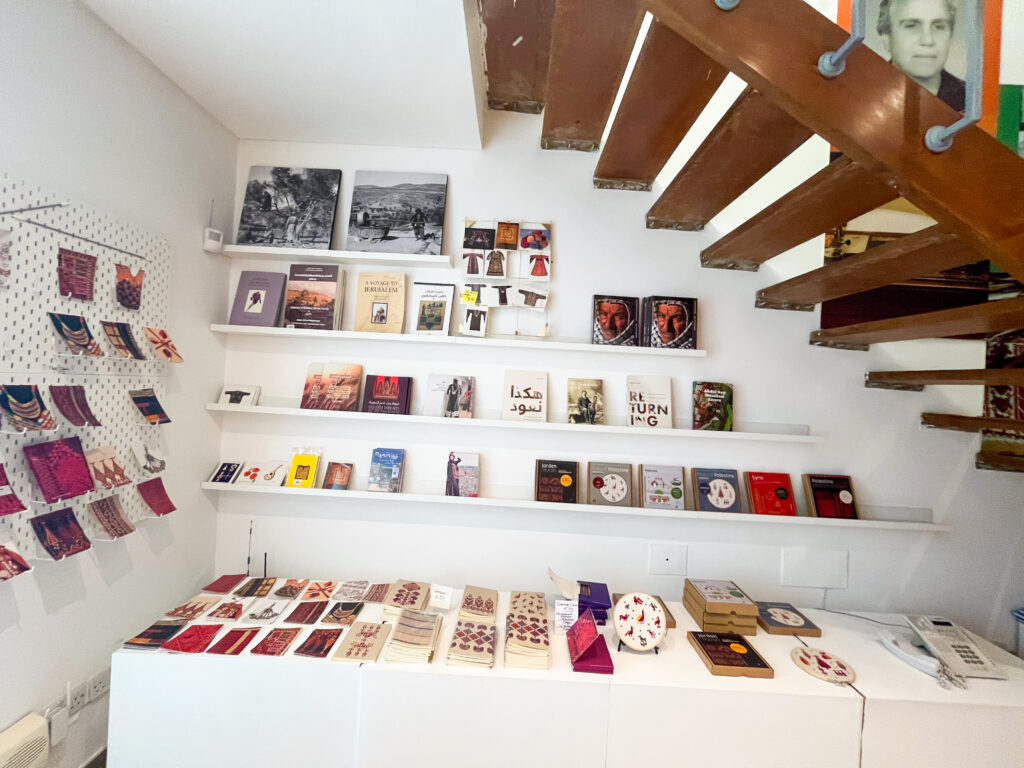
Tiraz: Where Culture and Craftsmanship Meet
Located in a residential neighborhood in Amman, Tiraz is both a museum and a cultural center. It was created by Widad Kawar—affectionately known as the “Mother of Palestinian Dress”. This living museum houses one of the largest collections of traditional Arab garments in the world.
From hand-stitched wedding dresses to intricately woven headpieces, the exhibits here celebrate Arab women’s artistry and resilience, while emphasizing the importance of preserving cultural identity amidst battles and strife, through clothing.
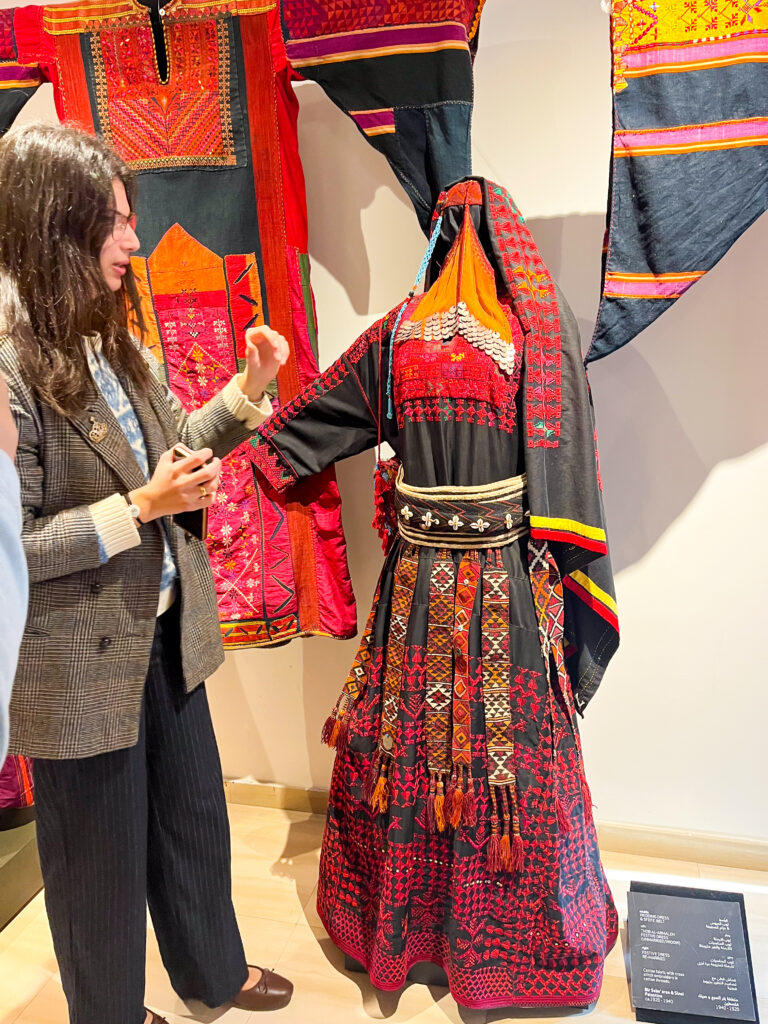
What Defines Jordan Traditional Clothing?
Jordan traditional clothing varies across tribes and regions, but certain elements remain consistent: long dresses (thobes), rich embroidery, indigo and red dyes, and heavy silver jewelry. There are some peculiarities that are specific to women from each part of the country.
- Northern Jordan traditional clothing features lighter fabrics and vibrant stitching in bold, red patterns.
- Southern Jordan traditional clothing (Bedouin) uses darker textiles, minimalist color schemes, and heavier jewelry and headpieces like the shawta.
I found it interesting that each region uses symbols and stitching patterns to reflect local identity, social status, and even life events like marriage or mourning. This is very similar to African culture where textile and its woven intricacies are used to signify similar things.
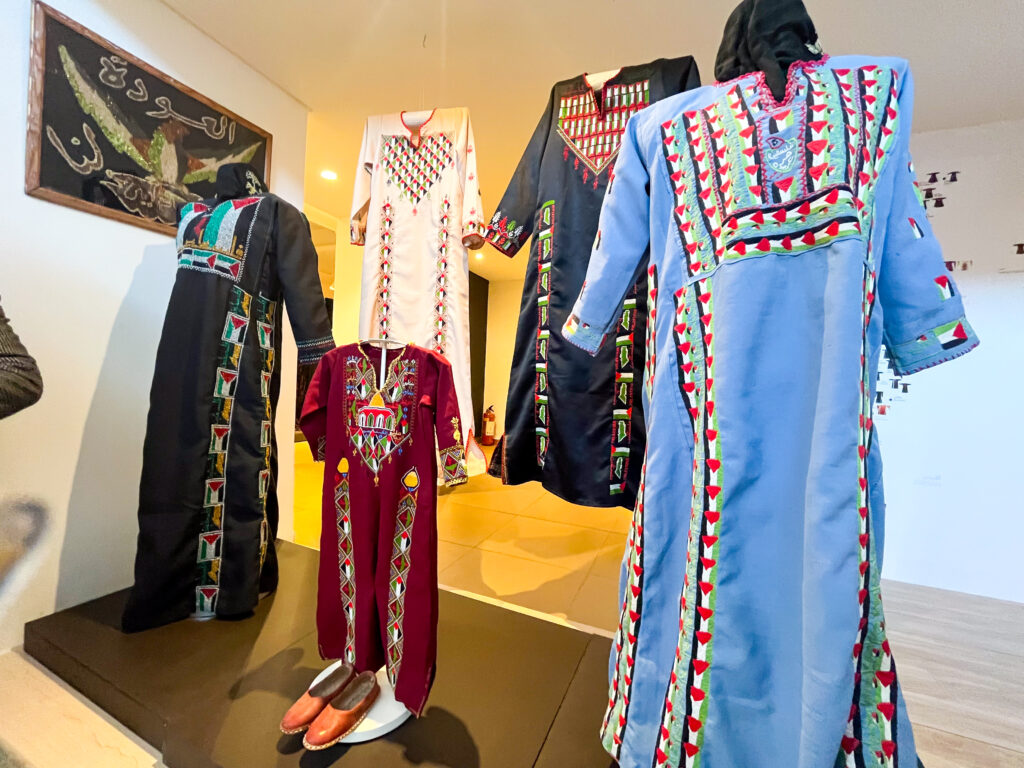
Palestinian and Jordanian Styles: Similar But Distinct
Beyond learning about Jordan traditional clothing, the Tiraz center highlights the cultural cross-pollination of the Levant. Palestinian and Jordanian dresses share elements like:
- Cross-stitch tatreez embroidery
- Natural fabrics (cotton, linen)
- Motifs like trees, birds, and stars
However, Palestinian thobes often have denser embroidery concentrated around the chest and sleeves, whereas Jordanian designs may use broader panels, darker tones, and a wider variety of fabrics.
These subtle differences show how each culture has maintained its uniqueness while also being part of a shared regional aesthetic.
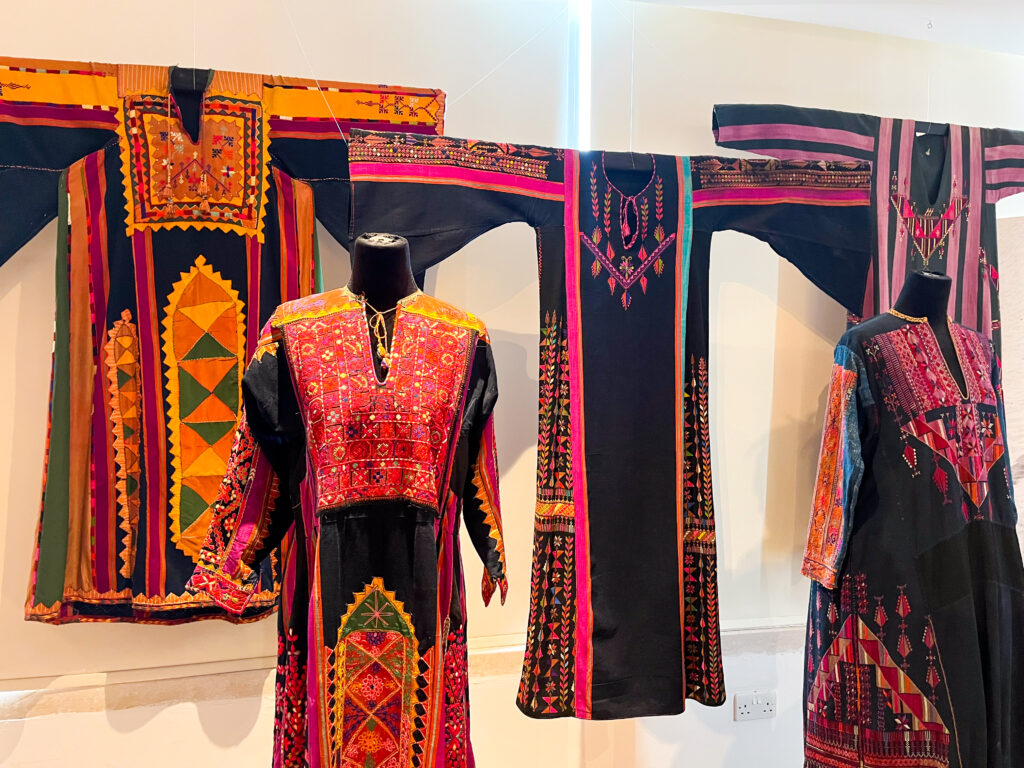
Why Museums Like Tiraz Matter
Tiraz doesn’t just preserve clothing; it safeguards memory, history and life defining events that are woven in these fabrics. Like the fact that women would communicate using different stitching patterns on their dresses (like African women would do with braiding patterns of cornrows). Like dress designs would be the only form of expression of women to signify resistance in an era when their voices were not yet heard. As you can see, fashion goes beyond style: it is a form of storytelling, and deeper yet:cultural survival.
As someone passionate about heritage and travel, visiting Tiraz helped me connect deeply with Jordan’s soul, and with stories that do not always make it to “mainstream” media. In every thread, there is meaning, intention, and artistry.
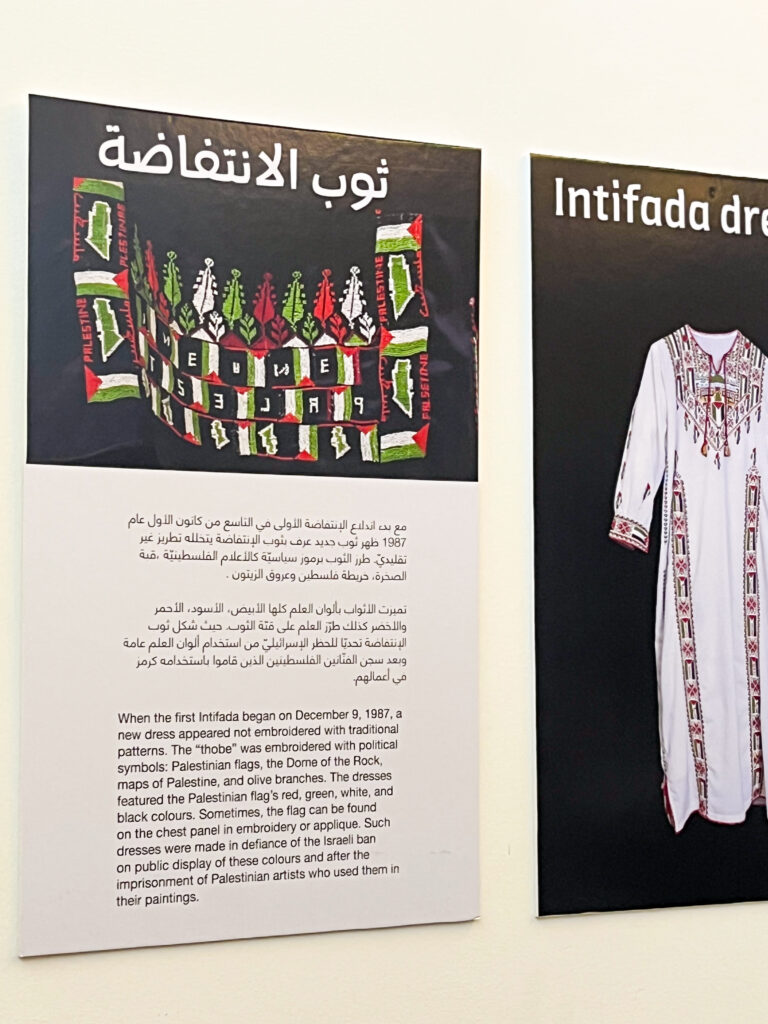
Why Jordan Traditional Clothing is Worth Exploring
Jordan traditional clothing is more than attire—it’s identity, resistance, and heritage sewn into fabric. My visit to Tiraz was a reminder that while trends may fade, tradition holds firm when celebrated and shared. And so, I see and value why Jordanian women (and women in the Levant in general) wear their garments with pride. They are adorned with the spirit of resilience, of resistance and unity, very characteristic of their roots and culture.
So, if you find yourself in Amman, make space in your itinerary for Tiraz. It’s a beautiful stop not just for fashion lovers, but for anyone curious about the stories clothing can tell.
To make it even easier for you (as you are planning your trip to Jordan), I made a comprehensive bundle of packing sheets that you can download and print for your next trip! Get your packing lists for the whole family here!
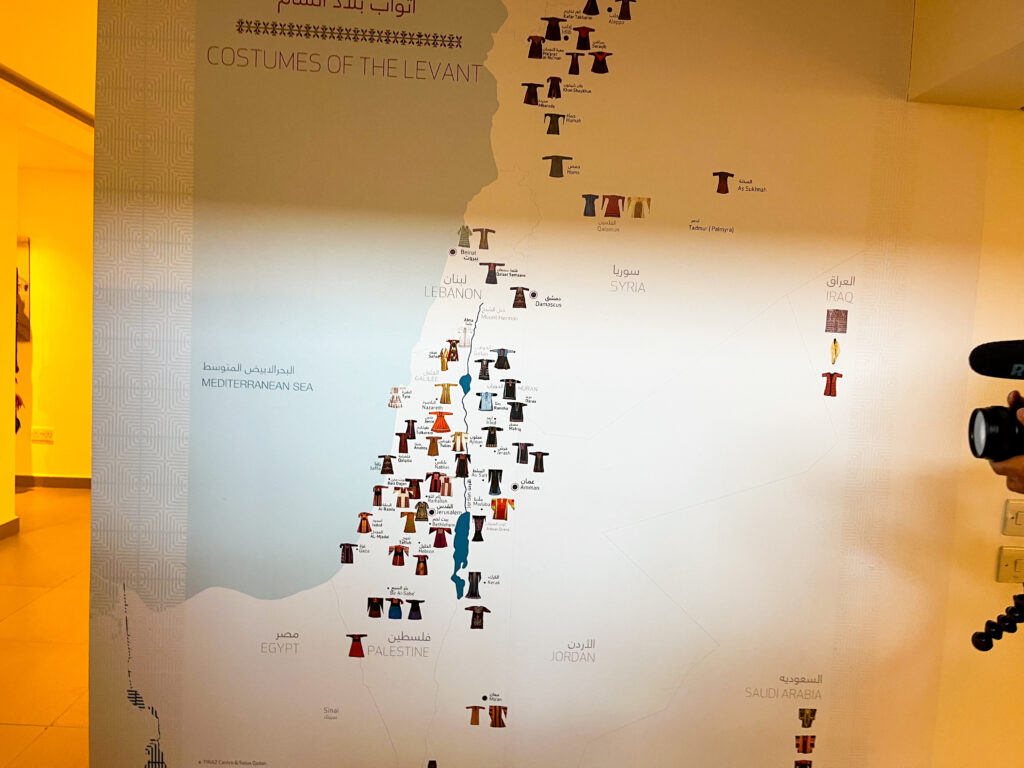
And speaking of additional stops that you should make during your trip to Jordan, make sure you check out my 10-Days Jordan travel itinerary to feel inspired about things you “must-see” and “must-do” that go beyond the typical tourist attractions!

Leave a Reply